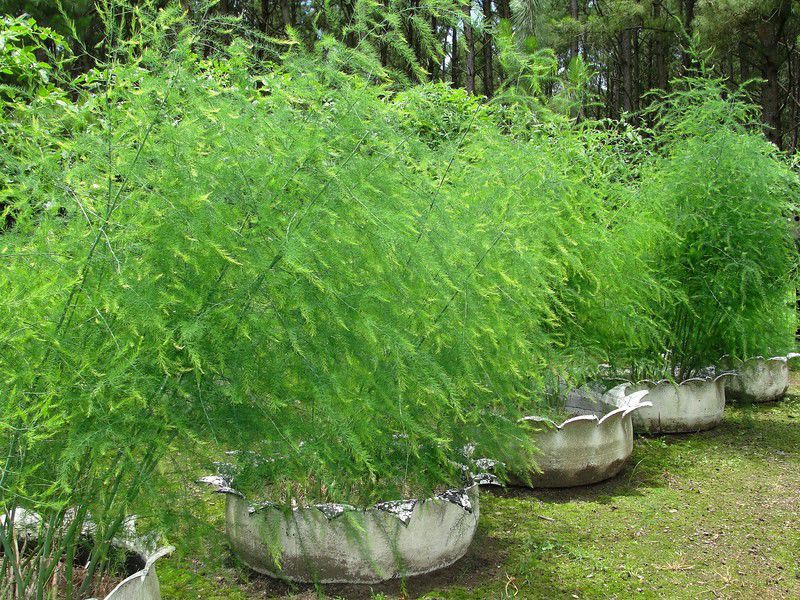Tire planters are a classic example of recycling
Published 11:48 pm Wednesday, February 1, 2017

- Courtesy Asparagus grows in these tire planters.
Hippies, organic gardeners and New Age environmentalists would like to think they invented recycling, but they didn’t. Cottage gardeners, country folks and those on the low end of the economic scale have always recycled.
Since my Grandmother Emanis starting taking me to the country dump grounds on the hidden little dirt roads of Deep East Texas, I’ve had a fascination with reusing discarded objects. One man’s trash truly is another man’s treasure. As crude as it sounds, it really wasn’t that much different from my current hobby of cruising junk shops and antique dealers. The displays and customer service have come a long way, however.
Trending
I have an acute interest in low-budget gardens. It’s not because I object to spending money on the garden. That’s where all my money goes! It’s because I find constant inspiration in the gardens of people who have no money to spend on their true love, but express their love nonetheless. Obviously, it doesn’t take money to create a wonderful garden. Some of the prettiest landscapes I’ve ever witnessed belonged to poor inner-city residents and lowly country gardeners.
While modern gardeners spend their cash on gazing globes, bronze statues and Italian terra cotta pots, these recycling pioneers make use of a myriad of “pre-owned” goods, including dishpans, leaky buckets and tire planters for containers.
That’s right, tire planters. Tires that used to go under the family car or truck make excellent containers for plants to grow in. First of all, they don’t crack or decay. You can bump them with the lawn mower or the Toyota and they remain unscathed. Early in my horticultural career I would have thought it ludicrous to have a 16-inch drainage hole in the bottom of a pot. But this big hole where the wheel used to be provides open access to the soil below during times of severe drought. Unfortunately “severe drought” in a pot occurs about twice a day during Texas summers. And landfills or vacant lots full of old tires aren’t the best or safest use of space.
I’ll admit that tires aren’t the prettiest pot to ever grace the patio. The “tired old look” just needs a makeover. Historically, most garden-worthy tires have been turned into “crown tire” planters, named because of their similarity to a king’s crown. To make a crown tire planter, one side-wall need to be cut out in a zigzag fashion between the inner ring and the tread that meets the pavement. There are no steal belts in this relatively thin side-wall. It does require a strong handled, sharp butcher knife and a little muscle. It’s not as hard as one might think. There are a number of YouTube videos showing how these days, though I’m convinced a number of them don’t have much experience making very many tire planters.
Cutting the tire planter is the easy part. Flipping it inside out is harder. This gives the points of the crown their typical reflexed look and also increases the soil capacity somewhat. Use your foot or knee to invert one small section of the tire, then gradually work your way around both sides of the tire until it’s completely turned inside out. The last portion is the hardest. Stomping it at this stage usually does the trick. Make sure your neighbors aren’t watching because you’ll look like a sweaty chimp at the zoo as you’re completing it.
Traditionally, many crown tire planters were painted white, but I’ve seen many assorted hues in my travels. I’ve even seen faux finishes painted to resemble copper and other upscale materials. Two coats of latex paint will normally last for years. Though easier, spray paints tend to crack. The crown edges don’t have to be pointed either. I’ve seen scallops and even hearts cut into the borders.
Trending
Fill the “new” container with a high quality potting mix and grow any typical container plants. I’ve produced everything from Irish potatoes and asparagus to annuals and perennials in them. I even grow blueberries in them back at the farm. It gives you a sense of environmental accomplishment and the neighbors a topic of conversation they’ll never tire of.
Greg Grant is the Smith County horticulturist for the Texas A&M AgriLife Extension Service. You can follow him on Facebook at Greg Grant Gardens, read his “Greg’s Ramblings” blog at arborgate.com or read his “In Greg’s Garden” in each issue of Texas Gardener magazine (texasgardener.com). For more information on local educational programming go to smith.agrilife.org.






